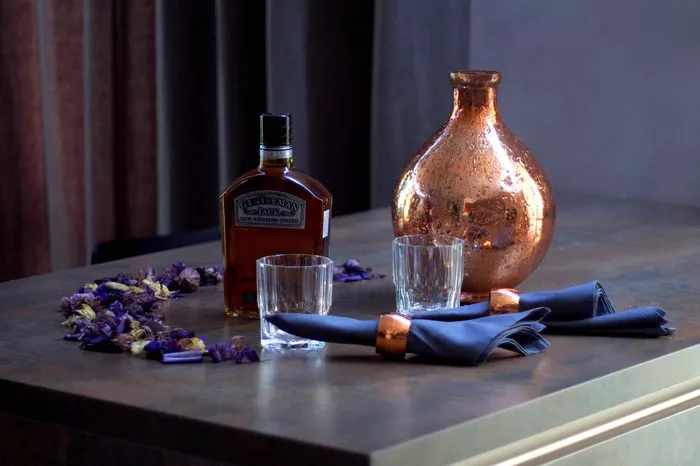When it comes to the world of wine, Merlot stands out as a beloved varietal cherished for its smoothness, fruitiness, and versatility. However, within the vast sea of Merlot offerings, discerning consumers often find themselves pondering the perennial question: which brand of Merlot is the best? In this article, we embark on a journey to explore the nuances of Merlot production, examine notable brands, and ultimately uncover the answer to this age-old query.
Understanding Merlot: A Versatile Gem
Merlot, a noble grape varietal, holds a special place in the hearts of wine enthusiasts worldwide. Renowned for its approachability and smoothness, Merlot often serves as a gateway to the world of red wines for novice drinkers. Its flavor profile typically includes notes of ripe plum, cherry, and sometimes hints of herbs or chocolate, creating a delightful sensory experience.
The Pioneers: Leading Brands in Merlot Production
In the realm of Merlot, certain brands have emerged as trailblazers, consistently delivering exceptional quality and distinctiveness in their offerings. One such standout is Duckhorn Vineyards, hailed for its commitment to crafting premium Merlot wines that showcase the unique terroir of California’s Napa Valley. Duckhorn’s Merlots are celebrated for their lush texture, vibrant fruit flavors, and impeccable balance, making them a perennial favorite among connoisseurs.
Moving across the Atlantic, we encounter another titan in the world of Merlot: Château Pétrus. Situated in the illustrious Pomerol appellation of Bordeaux, France, Château Pétrus is synonymous with luxury and prestige. Its Merlot-based wines are revered for their complexity, depth, and aging potential, commanding astronomical prices on the global market. For aficionados seeking the pinnacle of Merlot excellence, Château Pétrus represents the epitome of perfection.
Exploring Diversity: Regional Variations in Merlot Expression
One of the fascinating aspects of Merlot is its ability to express a diverse range of flavors and characteristics based on terroir. From the sun-drenched vineyards of California to the limestone-rich soils of Bordeaux, each region imparts its own imprint on Merlot, resulting in a kaleidoscope of styles for consumers to explore.
In California’s esteemed wine regions such as Napa Valley and Sonoma County, Merlot thrives in a Mediterranean climate, basking in long, warm days and cool nights. Here, Merlot wines often exhibit ripe fruit flavors, supple tannins, and a velvety mouthfeel, reflecting the influence of the Pacific Ocean and the region’s rich terroir. Notable producers like Duckhorn Vineyards, Shafer Vineyards, and Pride Mountain Vineyards consistently deliver top-tier Merlots that capture the essence of California winemaking.
Meanwhile, in Bordeaux, Merlot reigns supreme in the Right Bank appellations of Pomerol and Saint-Émilion. Here, the grape finds its ideal home in clay and limestone soils, yielding wines of unparalleled elegance and finesse. Château Pétrus stands as a shining example of the heights that Merlot can achieve in this hallowed terroir, with its wines displaying remarkable complexity, structure, and aging potential. Other esteemed estates such as Château Cheval Blanc and Château Canon further demonstrate the diversity and sophistication of Merlot in Bordeaux.
Navigating the Landscape: Factors to Consider in Merlot Selection
As consumers embark on their quest to discover the best brand of Merlot, several factors come into play to inform their decision-making process. Firstly, personal taste preferences play a crucial role, as individual palates vary in their appreciation for different flavor profiles and styles of Merlot. Some may gravitate towards fruit-forward, approachable wines, while others may prefer more structured, age-worthy expressions.
Secondly, consideration of vintage variability is essential, as Merlot, like all wines, can exhibit distinct characteristics from one growing season to another. Experienced producers adeptly navigate these fluctuations, crafting wines that showcase the unique qualities of each vintage while maintaining consistency in style and quality.
Thirdly, the reputation and track record of the producer carry significant weight in assessing the quality of a Merlot wine. Established brands with a history of excellence and accolades inspire confidence among consumers, signaling a commitment to craftsmanship and integrity in winemaking.
Finally, value for money is a critical consideration for many consumers, especially in a market flooded with options at various price points. While some may be willing to splurge on luxury bottlings from renowned estates, others seek high-quality Merlot wines that deliver exceptional value and enjoyment without breaking the bank.
The Verdict: Deciphering the Best Brand of Merlot
After traversing the vast terrain of Merlot production, exploring renowned brands, and delving into regional nuances, we arrive at the moment of truth: which brand of Merlot is the best? The answer, perhaps unsurprisingly, is subjective and multifaceted, shaped by individual preferences, experiences, and priorities.
For those enamored with the opulence and prestige of Bordeaux, Château Pétrus stands as a beacon of excellence, offering unparalleled Merlot wines that command respect and admiration from wine aficionados worldwide. Meanwhile, on the sun-drenched slopes of California, Duckhorn Vineyards shines as a paragon of Merlot craftsmanship, producing wines of exceptional quality and character that capture the essence of the Golden State’s winemaking prowess.
Ultimately, the best brand of Merlot is the one that resonates most deeply with each individual consumer, fulfilling their desires for flavor, quality, and enjoyment. Whether it’s the timeless elegance of Bordeaux or the modern sophistication of California, Merlot offers a wealth of options for wine lovers to explore and savor, each bottle telling a unique story of terroir, tradition, and craftsmanship. So, raise a glass to the quest for the best brand of Merlot, knowing that the journey itself is as enriching as the destination. Cheers!


